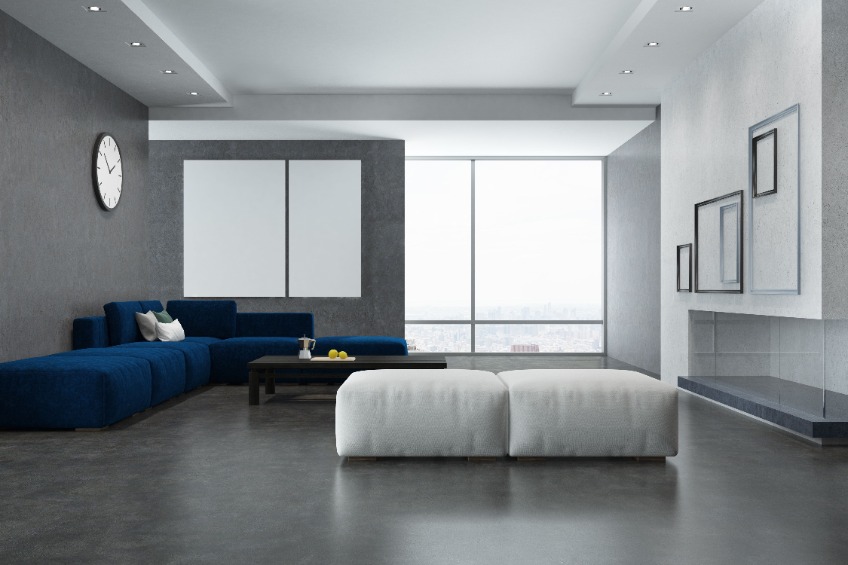Concrete flooring inside a home has come a long way over the years. Initially, most indoor concrete projects ended up a cold, grey finish that required a lot of decorating to make it look even remotely “homey.” But today, there are many options to take this practical, utilitarian idea into a gorgeous, finished piece for your home or business.
Cons of Indoor Concrete Flooring
- Concrete is hard – You already know this but think about how hard this material will be inside a home or business. Falls are a concern, and anything dropped on that floor will likely break. This can certainly be mitigated with area rugs, but you’ll need to add thick, high-quality rugs to your budget.
- Cracking is possible – Because concrete goes through an expansion and contraction process due to temperature changes, settling, and moisture contact, there will eventually be some cracking. Cracking doesn’t need to be a huge deterrent because patching and overlays can tackle this problem fairly easily and quickly. You just need to be prepared for this maintenance at some point. Colored concrete with designs can help disguise these cracks. You can also embrace small cracks as part of the uniqueness of the flooring.
- Be aware of moisture – Some concrete flooring projects in basements are susceptible to outside problems, such as leaky gutters or poor drainage around the foundation. Moisture rising up the slab can create a poor environment for concrete flooring. This can be discussed with a general contractor to assess any potential issues before a decision has been made. Additionally, proper sealing will help prevent moisture problems.
Pros of Indoor Concrete Flooring
- They are visually appealing – Concrete floors look modern and sleek. When done well, these floors are eye catching and make for an amazing design that can work for any space. (Consider concrete countertops too!)
- Tons of options – Concrete floors do not have to be grey or smooth. There are many tinting variations, staining colors, texturing ideas, and stamping designs for you to choose from. Go as exciting or as mild as you want. Stains can create a translucent look, dyes can offer vibrant finishes, and colored hardeners give a surface-level color. These are all options to add to the mix, but you can also apply a high-quality paint once the concrete is dry and sealed. You also have numerous options for textured surfaces if you don’t want a smooth finish. The concrete can be scored to create a pattern, stamped for a particular design, or troweled for a texture. You can also apply an acid stain to give it marble-like appearance.
- Easy Clean up – Concrete floors make for easy clean up. Spilled drinks, pet accidents, or dirt and debris dragged in are no problems for a concrete floor. They can be cleaned easily and are durable enough to withstand the traffic and impacts of daily living.
Concrete flooring inside a home or business is a personal choice that comes with positives and negatives. You can “warm” up a concrete floor easily with different color options and area rugs to make it an inviting space that’s durable yet gorgeous.
